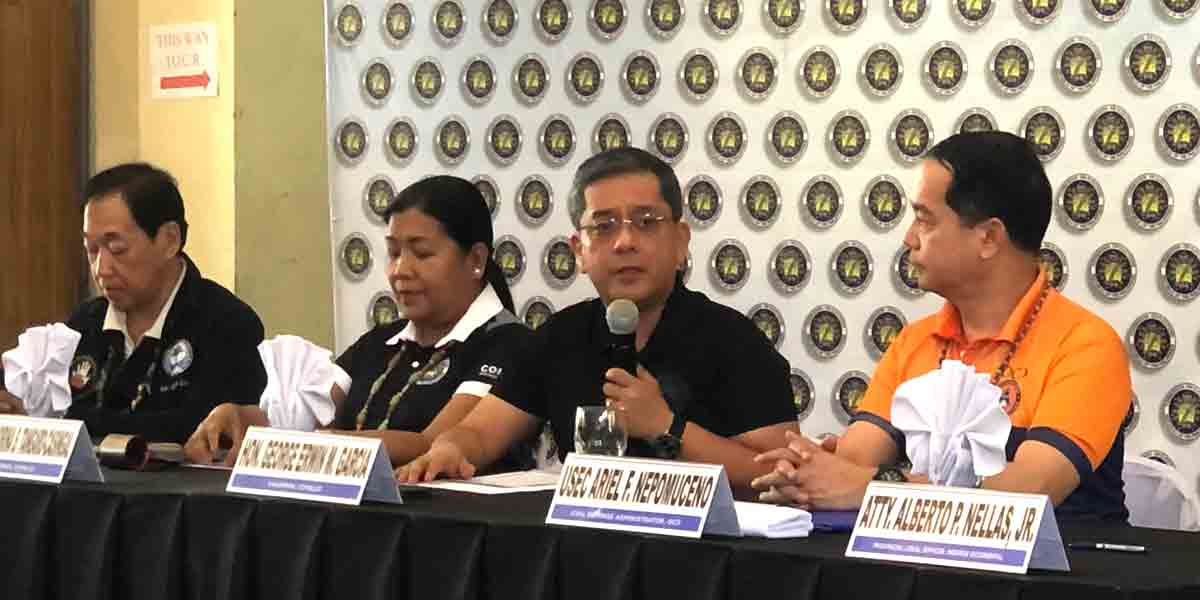By Francis Allan L. Angelo
The agricultural sector in the Philippines finds itself at a pivotal moment.
Recent discussions at an agricultural conference led by the Philippine Institute for Development Studies (PIDS) provided a blueprint for rethinking rural revitalization and sugar policy reform.
With the word war between the Sugar Regulatory Administration (SRA) and sugar planters escalating, these discussions hold relevance for both the present challenges and future directions of Philippine agriculture.
The conference, themed “Agricultural Development for Food Security,” brought together local and international experts, including Dr. Justin Lin of Peking University, Dr. Jim Roumasset of the University of Hawaii, and Dr. Karl Jandoc of the UP School of Economics.
Their analyses underscored the importance of policy reforms that not only address inefficiencies but also uplift stakeholders across the supply chain.
Dr. Lin outlined how China transformed its rural economy from subsistence farming to a near high-income agriculture-based society. Central to China’s success was the household responsibility system, which replaced collective farming and incentivized farmers to increase productivity.
Lin stressed that rural revitalization must balance economic dynamism with social harmony, ecological balance, effective governance, and prosperity. His presentation served as a starting point to evaluate whether the Philippines could adapt similar strategies to its unique conditions.
Meanwhile, Roumasset and Jandoc tackled a critical Philippine issue: sugar policy inefficiencies. They argued that the country’s current sugar system, dominated by quotas and tariffs, burdens consumers without substantially helping farmers.
Jandoc explained that farmers receive only 82% of the benefits from tariff protection, leaving them still vulnerable while inflating consumer prices. This inefficiency, they noted, costs the Philippine economy over PHP 60 billion annually.
Such numbers highlight the disconnect between policy objectives and outcomes. Protectionist sugar measures aim to shield local farmers but instead create a convoluted system that benefits intermediaries more than producers.
Roumasset suggested transitioning to a tariff-based system that aligns prices with international markets while redistributing benefits effectively. This recommendation strikes at the heart of the ongoing feud between the SRA and sugar planters, where both parties demand greater control over production and trade policies.
The word war has exposed deep-rooted mistrust and inefficiencies within the sugar industry.
Planters have accused the SRA of mismanagement, particularly in sugar importation, which they claim depresses farmgate prices. The SRA, on the other hand, insists that such measures are necessary to stabilize supply and meet domestic demand.
The resulting friction has paralyzed efforts to implement meaningful reform.
Experts like Roumasset and Jandoc offer a pathway out of this stalemate. Their emphasis on liberalization and targeted competition policies could help level the playing field while empowering farmers to maximize returns on their produce.
This approach mirrors China’s focus on leveraging regional strengths for competitive advantage. However, unlike China, the Philippines faces unique structural challenges. Farm sizes in the Philippines are much smaller, making economies of scale difficult to achieve.
Moreover, weak infrastructure, limited access to credit, and insufficient government support compound these challenges.
In this context, sugar planters argue that liberalization alone cannot address their struggles. They call for comprehensive reforms, including better financing programs, enhanced farm-to-market roads, and investments in research and development.
Balancing these demands with consumer welfare is the crux of effective sugar policy reform. The broader lessons of the conference extend beyond sugar.
Dr. Lin’s discussion on rural revitalization emphasizes the need for governance reforms to create efficient markets. For the Philippines, this means addressing corruption and inefficiency in agencies like the SRA to rebuild trust with stakeholders.
Equally important is the role of technology in driving agricultural transformation. The conference highlighted how China’s industrial policies supported technological advancements that improved farm yields and reduced environmental impacts.
The Philippines must take similar steps, particularly in sugar production, to boost efficiency and competitiveness. Such reforms require political will, a quality often lacking in the agricultural sector.
Roumasset pointed out that protectionist policies are politically popular but economically detrimental. This tension is evident in the Philippine sugar industry, where vested interests often outweigh public good. Overcoming this inertia demands bold leadership and a shift in public discourse.
The ongoing SRA-planters feud provides an opportunity to reframe the conversation around shared goals. Rather than focusing on blame, both parties must collaborate on solutions that enhance productivity and sustainability.
One possible starting point is the establishment of a multi-stakeholder body to oversee sugar policy reforms. This body could include representatives from the SRA, sugar planters, consumer groups, and independent experts to ensure balanced decision-making.
Such an approach aligns with the governance principles discussed at the conference, where inclusivity and accountability were identified as pillars of sustainable development.
The lessons from the PIDS conference also resonate with broader agricultural challenges in the Philippines.
Rice, another staple crop, suffers from similar inefficiencies in production and distribution. The Rice Tariffication Law, which aimed to liberalize the industry, has faced criticism for failing to deliver promised benefits to farmers.
These parallels underscore the importance of integrated reforms across all agricultural sectors. At the heart of these issues is the need for a long-term vision for Philippine agriculture.
The government must prioritize policies that uplift rural communities, enhance competitiveness, and ensure food security. This vision requires not just reforms but also investments in education, technology, and infrastructure.
Without these, the country risks falling further behind its regional peers.
The insights from the conference serve as a reminder that effective agricultural policies hinge on understanding the interconnectedness of economics, governance, and sustainability.
With the right reforms, the Philippines can revitalize its agricultural sector and secure a brighter future for rural communities.






















